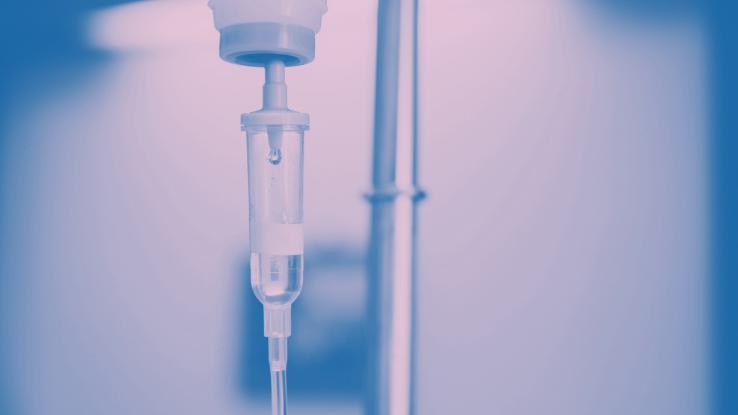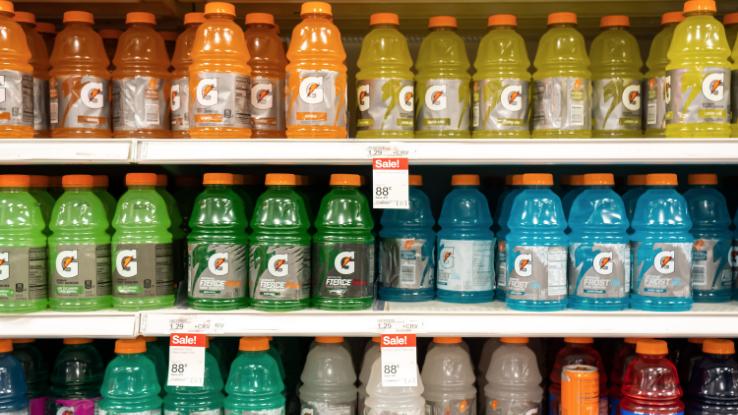How Might Stem Cells Continue to Play a Role in the Medical Field

Electrolytes are minerals found in blood and other bodily fluids. They are electrically charged and, as such, essential to keeping the heart, nerves and muscles functioning properly. With this in mind, it's important to maintain a precise and constant balance of electrolytes to stay healthy. The kidneys play an important role in ensuring that fluid and electrolyte levels remain in range despite any changes the body may undergo. Having an excess — or an insufficiency — of electrolytes in the body can be dangerous and, in some cases, fatal.
One of the major roles of electrolytes is to ensure that fluid levels inside and outside of all cells in the body are balanced. Fluid levels within individual cells change in response to electrolyte levels. For example, an increase in electrolytes within a cell draws more fluid in whereas a decrease in electrolytes promotes an outward flow of fluids. Sustaining this type of osmotic gradient is essential for nerve and muscle function, hydration, and maintenance of blood pH levels.

Additionally, electrolytes carry electrical impulses across the cell and to neighboring cells in order to promote muscle contractions and nerve impulses. The major electrolytes found in the body are calcium, sodium, potassium, phosphate, chloride and magnesium. Individual electrolyte levels can be measured by urine or blood tests.
The normal range of blood levels (called serum values) and individual functions for these electrolytes are:
Calcium: 8.7 to 10 milligrams per deciliter (mg/dL)
- Calcium is the most abundant electrolyte in the body. Calcium is mainly stored in the teeth and bones where it helps to make them strong. Calcium is also critical for muscle contraction, nerve signaling, blood clotting and normal heart function.
Sodium: 135 to 145 milliequivalent/liter (mEq/L)
- Sodium is the major cation (positively charged ion) found outside of the cell. It works to regulate the total amount of water in the body and plays a significant role in neuronal and nerve signaling.
Potassium: 3.5 to 5.2 mEq/L
- Potassium is the major cation inside the cell. Potassium is essential for proper functioning of the heart, kidneys, muscles, nerves, and digestive system.
Phosphate: 2.5 to 4.5 mg/dL
- Phosphate, or Phosphorus, makes up one percent of a person's total body weight. A majority of the body's phosphate is found in the bones and teeth where it promotes their formation. It also plays an important role in the body's utilization of carbohydrates and fats. Phosphates are also critical to the synthesis of proteins that promote the growth, maintenance, and repair of cells and tissues.
Chloride: 96 to 106 mEq/L
- Chloride is the major anion (negatively charged ion) found outside the cell. Chloride plays a critical role in keeping the proper balance of body fluids and maintaining the body's acid-base balance.
Magnesium: 1.5 to 2.5 mg/dL
- Magnesium is mainly found stored in bones or bound to proteins within the bloodstream. Magnesium is active in DNA replication and cardiovascular function; helps maintain normal muscle and nerve function; and keeps bones strong. Magnesium is also involved in metabolic function and can help regulate blood sugar levels.
What Is an Electrolyte Imbalance?
An electrolyte imbalance implies either having an excess or a deficiency of electrolytes in the body. The majority of electrolyte-related health problems occur when levels of sodium, potassium or calcium are out of normal range.

Electrolyte imbalances may be caused by:
- Loss of body fluids (e.g. low fluid intake, severe vomiting, diarrhea, sweating, or high fever)
- Malnutrition or imbalanced diet
- Eating disorders
- Malabsorption, or the inability to absorb electrolytes due to a variety of gastrointestinal conditions
- Hormonal or endocrine disorders
- Kidney disease
- Some medications, including chemotherapy drugs, diuretics, antibiotics, and corticosteroids all have the potential to impact electrolyte levels
Symptoms of electrolyte imbalances:
- Thirst
- Increased or Irregular heart beat
- Muscle cramping
- Nausea / vomiting
- Diarrhea
- Edema (excess fluid buildup)
- Headache
- Irritability
- Confusion
- Seizure
- Coma
- Treatments for electrolyte Imbalances, include:
- Intravenous (IV) fluids
- Oral supplementation
- Dietary changes. That is, minor electrolyte imbalances may be remedied with dietary changes. For example, consuming more potatoes, bananas or avocados will increase potassium levels. Eating more leafy green vegetables will increase magnesium levels. Increasing intake of celery and yogurt will increase sodium and calcium levels, respectively.
In order to maintain an electrolyte balance in the body, it is critical to replace electrolytes lost through sweat or as a result of an imbalanced diet. A diet that includes whole grains, leafy greens, and fresh fruits and vegetables typically provides those needed electrolytes. However, depending upon your lifestyle, it is also important to supplement dietary intake with sports drinks or fruit juices when participating in strenuous activity.
Resource Links:
- "Electrolytes" via MedlinePlus.
- "Electrolyte Test" via National Health Service.
- "The Effects of Oral Magnesium Supplementation on Glycemic Response among Type 2 Diabetes Patients" via U.S. National Library of Medicine and National Institutes of Health.
- Capriotti, Theresa and Joan Parker Frizzel. Pathophysiology: Introductory Concepts and Clinical Perspectives. F.A. Davis Company, 2016.
Source: https://www.thehealthfeed.com/nutrition-supplements/role-of-electrolytes-in-the-body?utm_content=params%3Ao%3D1668962%26ad%3DdirN%26qo%3DserpIndex&ueid=ecf958a6-468c-423d-96ba-dd05a6176b82
0 Response to "How Might Stem Cells Continue to Play a Role in the Medical Field"
Post a Comment